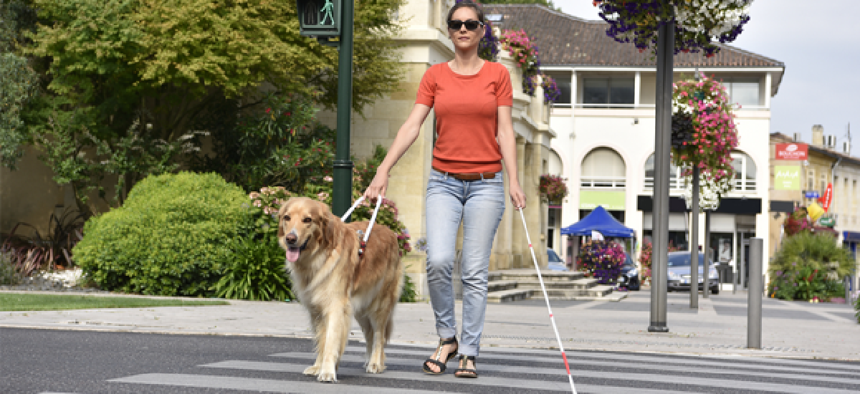NYC looks to tech to improve pedestrian safety

As part of its goal to eventually eliminate pedestrian fatalities in its streets, New York City is considering smartphones or wearable devices to help visually impaired pedestrians safely cross streets.
As part of its goal to eventually eliminate pedestrian fatalities in its streets, New York City is considering smartphones or wearable devices to help visually impaired pedestrians safely cross streets. These devices would communicate with traffic signals at intersections and pass connected roadway information to the pedestrian.
New York was one of three sites selected last September by the Department of Transportation to test intersection communications to improve vehicle flow and pedestrian safety. As part of DOT’s initiative, New York is upgrading traffic signals with vehicle-to-infrastructure technology in midtown Manhattan and throughout Brooklyn. These upgrades incorporate a number of applications to address injuries to pedestrians in crosswalks and from cars running red lights and making right turns at crowded intersections.
To protect visually impaired pedestrians, the city envisions a smartphone app or wearable device that receives messages from blind-spot monitors and roadside equipment that transmit information about the traffic signal so the pedestrian knows what is happening. The mobile-accessible pedestrian signal system would use designated short-range communications (DSRC) to communicate information.
DSRC are wireless communication channels specifically designed for vehicle safety and mobility. Many transportation safety projects, such as early warning systems for vehicles and intersection collision avoidance, rely on DSRC. It’s currently used for electronic toll collection and, in Singapore, road use measurement.
The city is working to determine the commercial viability of DSRC-enabled mobile devices, identify development standards for the project and create an open, interoperable technology platform, according to an information request on the project.
And at the end of September, New York City announced that it has begun phase two of its Connected Vehicle Pilot Deployment Program. This 20-month period will be used to design, build and test wireless in-vehicle, mobile device and roadside technologies. The city said it also evaluating vendor proposals for mobile wearable devices as part of the pilot, as well as a mobile app that will provide intersection movement guidance for visually impaired pedestrians.
NEXT STORY: USPS weighs public perception of drone delivery





